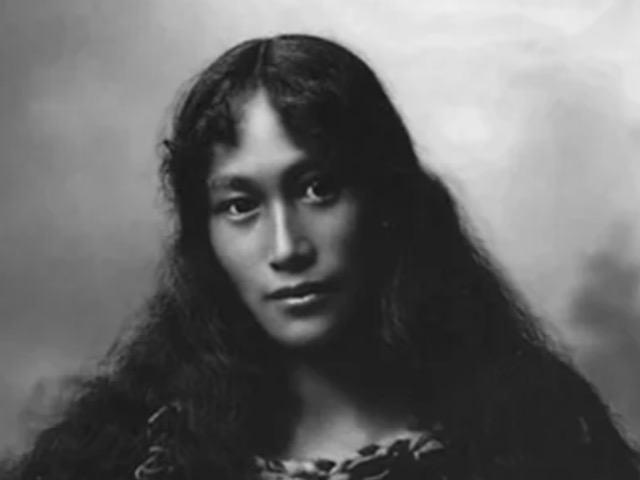This story appears here courtesy of TheChurchNews.com. It is not for use by other media.
By Christine Rappleye, Church News
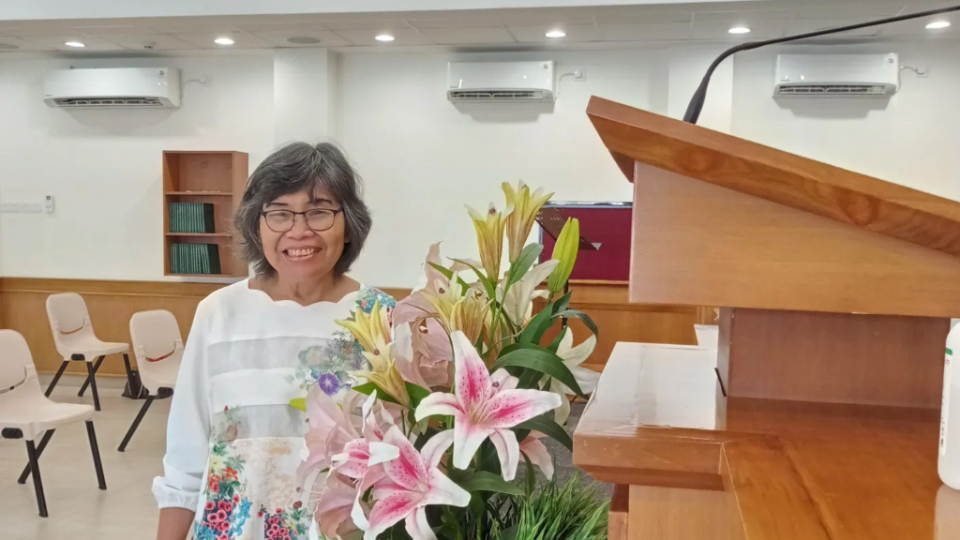
Sri-Anon-Indonesia1
Sri Anon smiles for a photo in the meetinghouse in the Bogor 2nd Ward, Jakarta Indonesia Stake, on Sunday, July 4, 2022. Photo courtesy of Church News.Copyright 2022 Deseret News Publishing Company.
Editor’s note: July 2022 marked the 175th anniversary of the vanguard company of pioneers arriving in the Salt Lake Valley, in July 1847, after Latter-day Saints were driven by mobs out of the Nauvoo, Illinois, area the preceding year. The Church News is honoring the achievements of pioneers crossing the Plains 175 years ago and of Latter-day Saint pioneers of different times on every continent. Today: Sri Anon of Indonesia.
As a young woman in Indonesia, Sri Anon’s passion was learning English, but her father wanted her to go to pharmacy school.
This desire to learn English led Sri Anon — who like many Indonesians only uses given names — to The Church of Jesus Christ of Latter-day Saints just a few years after missionaries arrived in the country. Now 79, she has seen the Church grow in her native country and has translated many Church materials and records as part of her current assignment as the Indonesia Church history adviser.
Finding the Gospel
After graduating from pharmacy school, Sri Anon worked at a drugstore and studied at an English language academy for two years. When the academy closed, a friend suggested Sri Anon attend a new English class — one taught by native speakers. The instructors were American missionaries from The Church of Jesus Christ of Latter-day Saints.
“The missionaries were successful, and there were more than 100 students learning the class,” said Sri Anon, who speaks Indonesian in addition to her native language, Javanese. Sri Anon enjoyed the English language classes.
At that time, she was also seeking answers to religious questions.
Sri Anon grew up in a happy Muslim family in Solo, a city also called Surakarta, in the Central Java province. At pharmacy school, she lived in the dorms with a Christian roommate named Rohana.
One day, Rohana took Sri Anon with her to a Christian bookstore, where she saw a statue of Jesus Christ being crucified.
“I felt that His eyes looked directly at me and touched my heart,” Sri Anon said.
It was around that time that her mukena, the garment worn by Muslims when they pray, was lost, she said. She soon began going to church every Sunday with Rohana. When she graduated, returned home and started working at a drugstore, Sri Anon began looking for a church to attend.
“I thought, ‘I am a Muslim, but I do not pray anymore. I am a Christian, but I am not baptized. When I die, where should I go?’” She had other questions, too, so began attending a local Christian church, but she wasn’t satisfied with the answers from the reverend.
When she started attending the missionaries’ English classes, they invited her to attend Sunday School — and she went. She had questions, such as why there wasn’t a collection plate like at other Christian churches she had attended. The missionaries told her about tithing and invited her to learn more about the gospel.
“While they taught me about the plan of salvation, I felt that I found the answer to my question,” Sri Anon said. “I was sure that [the Church] was a true church.”
She was 30 when she was baptized on February 22, 1973, by Elder Warren Harper from Idaho and confirmed by Elder David Koch from Utah — less than three years after the Church had received official recognition in Indonesia.
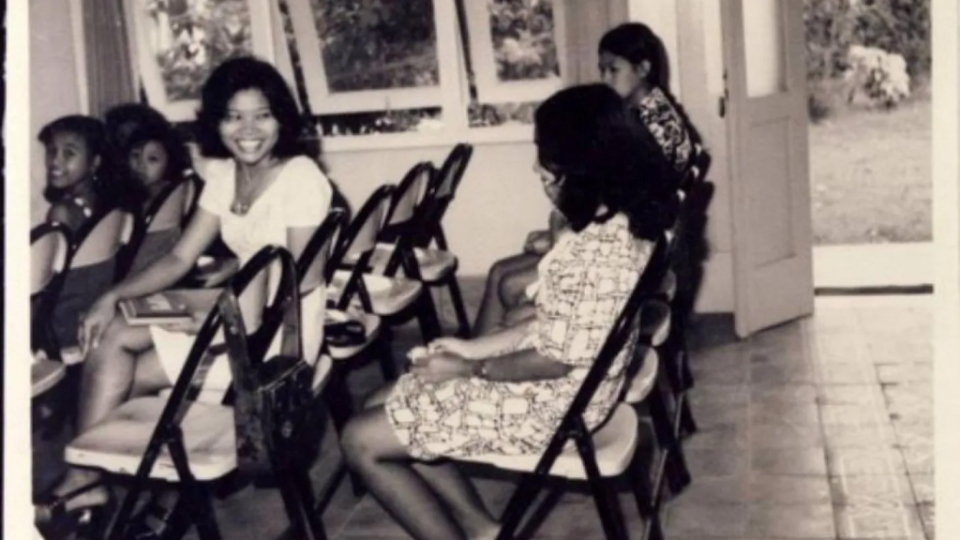
Sri-Anon-Indonesia2
Sri Anon, in approximately 1973–1974, sitting in the second row, was baptized in 1973. Her first calling was as a Primary teacher. Photo courtesy of Church News.Copyright 2022 Deseret News Publishing Company.
At that time, about 20 members met for the Solo Group in a large home for Sunday School and sacrament meeting. By October, the group had grown to about 100 people and become a branch, Sri Anon said. Today, there are several wards in Indonesia.
Her first calling was a Primary teacher in the Solo Group. She later served as the branch Primary president, the district Primary president and a youth Sunday School teacher. Sri Anon was also a temple worker in the Hong Kong Temple, and she taught institute classes.
Not long after her baptism, the drugstore she worked at was sold, and she began searching for a new job. Within a few months, she saw an announcement from the Church’s distribution center in Bandung, West Java province, looking for part-time translators. It was a position that could be done remotely. Sri Anon applied and was hired as one of the first group of translators from the Central Java province. Sandra and Irma, the other two translators, who were from Semarang, the capital of the Central Java province, would review Sri Anon’s translations.
Her first assignment was to translate the family home evening manual, she said.
“Maybe the missionary [the leader of the Solo Group] gave me these callings, because at that time, the guidebooks and the textbooks, even the Book of Mormon, had not yet been translated into the Indonesian language,” she said. “Therefore, when teaching the youth class, I translated the textbook and assigned the students to take turns teaching the class. My purpose was to educate them in self-confidence and how to teach and learn the gospel better.”
Sri Anon translated many children’s songs into Indonesian, especially for Primary presentations, and helped with songs for the first edition of the Children’s Songbook and about 90 hymns for the fourth edition of the Indonesian hymnbook. Since 2017, she has been involved in a group that translates hymns.
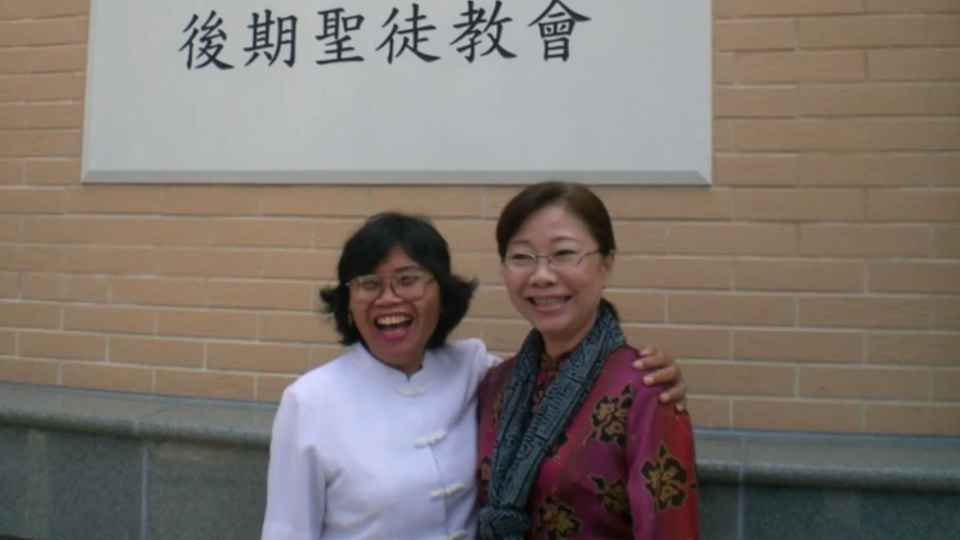
Sri-Anon-Indonesia3
Sri Anon (left) and Sandra (right) were two of the first three translators hired by the Church in Indonesia in the 1970s. They are shown here outside of patron housing at the Hong Kong Temple during a temple trip in 2010. Photo courtesy of Church News.Copyright 2022 Deseret News Publishing Company.
After her initial successes with translation, Sri Anon was able to get a full-time position for an engineering firm that was looking for a typist who knew English. She continued with her translation work while working for the engineering firm. In 1979, Sri Anon got married, and she and her husband moved to Jakarta with his work. Her late husband, Koko Bintarko, was the first branch president of the Jakarta Raya Branch when it split from the Jakarta Branch in the early 1980s.
In Jakarta, Sri Anon met a Church member who was the vice president of a Canadian oil company, Asamera Oil, who was looking for a secretary. She took the job. After about 19 years at this position, she retired and served as a senior missionary.
“I have a testimony that the Lord has a wonderful plan and gave me uncountable blessings,” she said. Sri Anon later noted that she sees how “the Lord is always taking care of [her].”
The Church in Indonesia
The first Indonesian to be baptized in the country was Sutrisno, on June 1, 1969. He had met Latter-day Saints who were living in Indonesia in 1957 and lived with one of the families for three years.
In October 1969, Elder Ezra Taft Benson of the Quorum of the Twelve Apostles and Elder Bruce R. McConkie of the Seventy visited, and Elder Benson offered a prayer over the land and people of Indonesia.
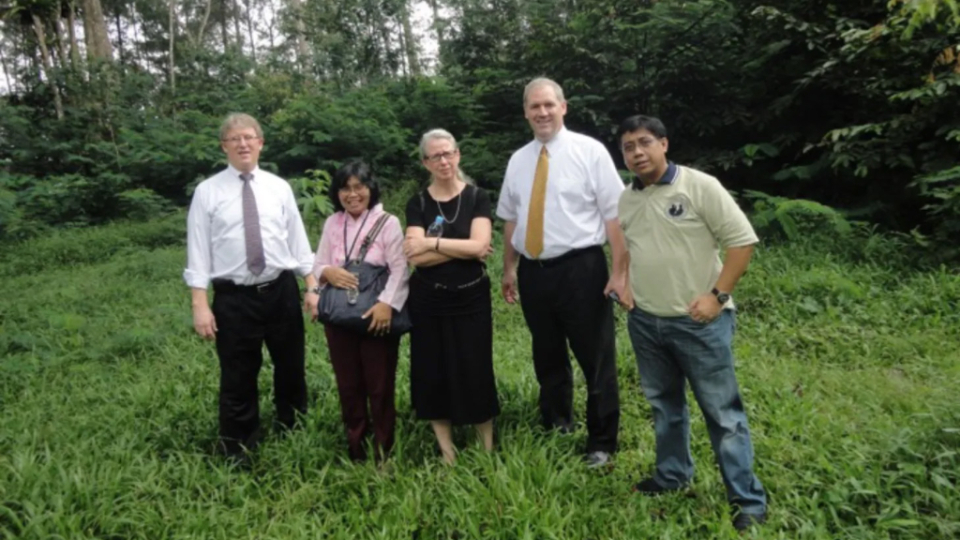
Sri-Anon-Indonesia-4
Dennis Lyn Phillips (left); Sri Anon; Jill Thompson Andersen; Wayne Dell Crosby and Erwin M. Dumalang, currently the Jakarta Indonesia Stake president, in March 2013, visit the site on Mega Mendung Hill, Bogor area, where the country was dedicated on October 26, 1969, by Elder Ezra Taft Benson and Elder Bruce R. McConkie. Photo courtesy of Church News.Copyright 2022 Deseret News Publishing Company.
In January 1970, six missionaries from the Southeast Asia Mission arrived in Jakarta and were met by several Latter-day Saints, both Indonesians and those on work assignments in the country. The first branch was organized in February, and the missionaries baptized two people in March. In August, the Church received recognition from the Republic of Indonesia.
President Russell M. Nelson, during a visit to Jakarta during his Southeast Asia ministry in November 2019, said, “That sequence is a testimony of the divinity of the priesthood power of an atmospheric dedication.”
In the late 1970s, at the request of government leaders, foreign missionaries were replaced by Indonesian nationals. The last foreign missionaries left in 1981. Many native Indonesians have served in their home country, and foreign senior couple missionaries began serving there in the 1990s.
“Many local young men and women have served missions. We have our own local missionaries, and our self-confidence is growing that local missionaries are capable. And the Church [keeps] growing,” Sri Anon said of the Church’s growth in a country where 87.2% of the 277 million people are Muslim.
There were eight groups or branches when Sri Anon was baptized in 1973. As of the end of 2021, there were more than 7,500 members, two stakes, 15 wards and nine branches.
Meeting Church Leaders
Sri Anon remembers two visits from President Gordon B. Hinckley — as an Apostle in 1976 and as Church President in 2000. In 1976, due to flight delays, he wasn’t able to make it to Semarang in Central Java province, where members waited for him to arrive, so Sri Anon and about 20 other members took the train to Jakarta to see him the next morning. Church members picked them up at the train station and took them to the meetinghouse where they heard him speak.
It was after those spiritual experiences that “the Solo Branch was growing very fast and became the first branch which was separated into four branches,” she said.
Sri Anon also saw President Hinckley during his ministry in 2000, while she was doing her missionary training.
“I attended the incredible devotional in a big meetinghouse and felt a strong influence of the Holy Spirit,” Sri Anon said.
She also sang in the choir when President Nelson and Elder D. Todd Christofferson of the Quorum of the Twelve Apostles ministered there in 2019.
“I was very happy to listen to the Prophet,” she said.
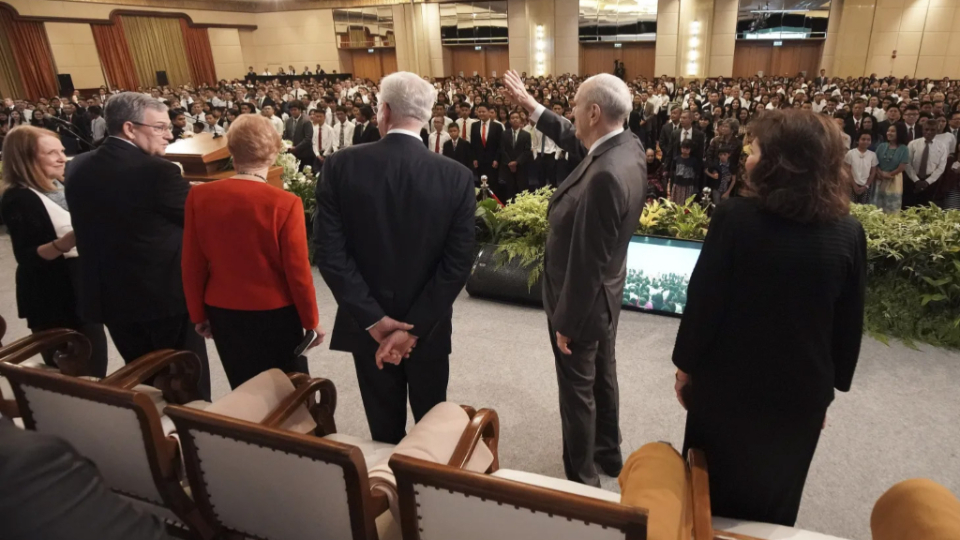
President-Nelson-Indonesia
President Russell M. Nelson of The Church of Jesus Christ of Latter-day Saints and his wife, Sister Wendy Nelson, and Elder D. Todd Christofferson of the Quorum of the Twelve Apostles and his wife, Sister Kathy Christofferson, enter a devotional in Jakarta, Indonesia, on November 21, 2019. Photo by Jeffrey D. Allred, courtesy of Church News.Copyright 2022 Deseret News Publishing Company.
‘Uncountable Blessings’
“The Lord blesses me abundantly with uncountable blessings,” Sri Anon said.
Many times she’s wondered how she would be able to do her callings, especially when it seems there are people more talented, have better English or use technology better.
The answer she received through a dream was “If not you, then who?”
As she has pondered this, a scripture that has resonated with her is Jeremiah 18:6: “O house of Israel, cannot I do with you as this potter? Saith the Lord. Behold, as the clay in the potter’s hand, so are ye in mine hand, O house of Israel.”
“I understand and am grateful that the Lord wanted to make me [clay] to be a potter, or to change … to something,” she said.
Copyright 2022 Deseret News Publishing Company.

